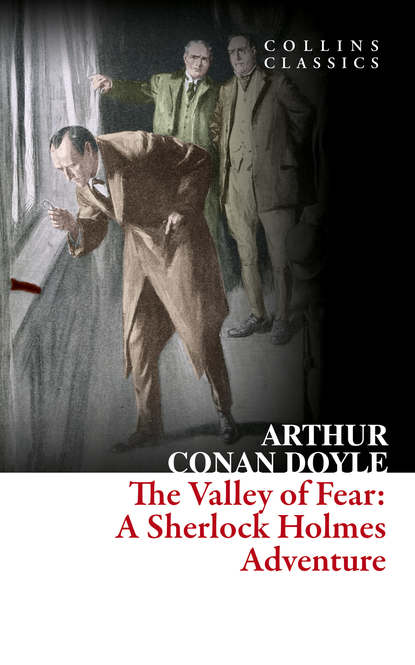По всем вопросам обращайтесь на: info@litportal.ru
(©) 2003-2024.
✖
The Valley of Fear
Автор
Год написания книги
2019
Настройки чтения
Размер шрифта
Высота строк
Поля
Aged 30, William’s son, William II, took over the business. A keen humanitarian with a warm heart and a generous spirit, William II was truly ‘Victorian’ in his outlook. He introduced new, up-to-date steam presses and published affordable editions of Shakespeare’s works and ThePilgrim’s Progress, making them available to the masses for the first time. A new demand for educational books meant that success came with the publication of travel books, scientific books, encyclopedias, and dictionaries. This demand to be educated led to the later publication of atlases, and Collins also held the monopoly on scripture writing at the time.
In the 1860s Collins began to expand and diversify and the idea of ‘books for the millions’ was developed. Affordable editions of classical literature were published, and in 1903 Collins introduced 10 titles in their Collins Handy Illustrated Pocket Novels. These proved so popular that a few years later this had increased to an output of 50 volumes, selling nearly half a million in their year of publication. In the same year, The Everyman’s Library was also instituted, with the idea of publishing an affordable library of the most important classical works, biographies, religious and philosophical treatments, plays, poems, travel, and adventure. This series eclipsed all competition at the time, and the introduction of paperback books in the 1950s helped to open that market and marked a high point in the industry.
HarperCollins is and has always been a champion of the classics, and the current Collins Classics series follows in this tradition – publishing classical literature that is affordable and available to all. Beautifully packaged, highly collectible, and intended to be reread and enjoyed at every opportunity.
Life & Times (#ulink_565b456f-e98d-52ab-90f1-4785a33494bc)
About the Author
Arthur Conan Doyle was born in Edinburgh, Scotland, in 1859, the year Charles Darwin’s The Origin of Species was published. Conan Doyle was raised Catholic but declared himself agnostic by the time he began reading medicine at Edinburgh University in 1876. He attained his doctorate in 1885, researching a condition caused by syphilis, known as tabes dorsalis, and characterised by the degeneration of sensory neurons causing the body to malfunction.
Conan Doyle’s professional life began with a stint as ship’s doctor on a voyage around the coast of west Africa. In early 1882, before his doctorate was complete, he set up a surgery in Plymouth, England, with a university friend. Unfortunately, their professional relationship was short-lived and Conan Doyle had moved to Southsea, England, by that summer. He then established his own medical practice, but found that business was slow, so he worked on his writing, which he had enjoyed from an early age. By 1887, he had published his first Sherlock Holmes novel and steered his career in a different direction.
Between 1887 and 1927, Conan Doyle published nine Sherlock Holmes books: four novels and five collections of short stories. He wrote many other books, but Sherlock Holmes became such an iconic character that his other works were rather overshadowed. In fact, Conan Doyle made the decision to kill off Sherlock Holmes in 1894, in a short story entitled The Final Problem. There was such public outcry at the death of Sherlock Holmes that Conan Doyle was moved to bring him back to life in The Return of Sherlock Holmes.
Despite his agnosticism, Conan Doyle developed an interest in spiritualism, becoming fascinated by beliefs in supernatural phenomena, including the Cottingley Fairy photographs, now understood to be hoaxes. His obsession also created a rift between himself and his friend, escapologist Harry Houdini. Conan Doyle couldn’t accept that Houdini’s escapades were elaborate tricks and Houdini grew vexed at Conan Doyle’s insistence that he possessed magical powers.
Conan Doyle suffered from considerable personal tragedy in the early years of the 20th century. A number of family members died, including his wife Louise, in 1906, and his son Kingsley, in 1918. There was also the horror of World War I to contend with, which affected the entire nation’s morale.
The Influence of Science
One of Conan Doyle’s better-known other works is the science-fiction novel The Lost World, published in 1912. The character Professor Challenger mounts an expedition to the Amazon Basin. He and his entourage encounter all manner of prehistoric animals along the way and witness warfare between an indigenous tribe and ape-men. In context, this novel can be seen as a document of scientific inquiry at the time. The French science-fiction author Jules Verne had died six years before, leaving an anthology of similar stories, including Journey to the Centre of the Earth. Similarly, Conan Doyle’s contemporary, the English writer H. G. Wells, had published The Time Machine in 1895. These books all enabled the characters to visit other places in time and to witness extinct creatures brought back to life. This general theme proved popular in an era when fossils and the processes of evolution were beginning to be understood by science. Conan Doyle used science to underpin his literature, although it is fair to say that he allowed pseudoscience to also appear towards the end of his life. Sherlock Holmes was Conan Doyle’s expression of his recognition that the application of empirical science and acute intellect were the things that members of the British Empire saw as the reason for their success.
Sherlock Holmes
Arthur Conan Doyle originally invented and wrote about the character of Sherlock Holmes to fill his time during his period as a general practitioner. In 1887 came the first published appearance of Holmes, along with his faithful companion Dr. Watson, in a novel entitled A Study in Scarlet. Then three years after that came his second, The Sign of the Four.
These books established Conan Doyle as a successful author. The Adventures of Sherlock Holmes was published in 1892. Six of the twelve stories are described as ‘adventures’ in their title, because they were originally published singly in The Strand Magazine and this provided a sense of continuity to the reader – a type of ‘product branding’. He had devised the detective mystery novel, considered a new genre at the time. Real-life crime cases were not usually very mysterious, but Conan Doyle recognised a need to elaborate for the sake of producing a good read. It is worth noting, however, that the case of the Whitehall Murders and Jack the Ripper had been prevalent in British newspapers in 1888, making the theme of mysterious crime-solving very topical. In fact, many of Conan Doyle’s fans wrote to him, suggesting that Sherlock Holmes attempt to solve the aforementioned crime. However, the author was wise enough to realise that there should be no crossover between fiction and fact, so Holmes was never called upon.
The private detective Sherlock Holmes was, in essence, a hybrid between the Victorian gentleman scientist and the police detective. The Victorian era marked an historical point where science came into its own as a distinct discipline based on empirical experimentation. Before then, science had been rather more ambiguous in its definition. Physicians, chemists and biologists had shown that the world always operates according to strict scientific rules and laws. It was this new phenomenon of scientific certainty that allowed Sherlock Holmes to confidently solve crimes in an age when police investigation was generally understood to be largely a matter of hit and miss, a mix of luck and judgement. Although a fictitious character, Holmes revolutionised the perception of what could be achieved by way of identifying and collecting evidence from crime scenes, theorising motives and courses of events and pinpointing suspects.
It suited the character development better for Holmes to be a private detective, as he evidently possessed a quality of intellectual genius which, so often, is accompanied by idiosyncrasies and eccentricities that make for a personality ill-suited to the routine and regulations of conventional employment.
To make Holmes believable as a character with an exceptional mind, he also needed to be flawed in certain ways, so the author made him something of a loner, with obsessive, fanatical and addictive traits. The result was a well-rounded character that the reader could understand, if not identify with, because he too had vulnerabilities and weaknesses common to us all. In fact, Conan Doyle openly admitted that the greatest part of Holmes was based on someone he knew: Professor Joseph Bell, a Scottish university lecturer and forensic pathologist. Conan Doyle had been impressed by the way Bell had implemented scientific analysis and detailed observation during post-mortem examinations in deducing the cause of death. Although commonplace now, a forensic approach was something quite new in 1877, when they first met.
Conan Doyle commented that Bell’s force of habit, or inculcation, was one of observation, inference and deduction, so that the most likely cause of death was arrived at by a methodical process of elimination. It was a mindset of reason, logic and the application of acquired knowledge; perfect for a successful private investigator. The term Occam’s razor is sometimes applied to Holmes’ method, because it explains things by reducing, or razing, options so that assumptions and conclusions can be made with a reasonable level of accuracy and confidence.
At Sherlock Holmes’ side in all of his investigations is Dr. John Watson, who acts as an enthusiastic deputy. He also narrates most of the Sherlock Holmes stories, so that the reader experiences events from a second-person perspective. Dr. Watson is intelligent in his own right, but he admires Holmes for his ability to think about things on a higher plane. It is notable that Holmes has no letters before his name, because he is a free thinker and rejects the notion of establishment and official credentials.
Similarly, Holmes has a rather condescending view of those employed at Scotland Yard, the police headquarters in London. Inspector Lestrade is a Scotland Yard detective for whom Holmes has mixed feelings. On the one hand, he considers Lestrade the best detective on the force, but on the other hand, he seems to only tolerate him because Lestrade is useful and efficient at dealing with the more mundane duties of making arrests and providing manpower.
One notable characteristic of Sherlock Holmes is his penchant for dressing in disguise. Conan Doyle saw that it would be useful for Holmes to be a master of disguise, so that he could access situations without the requirement for assistants who might otherwise do the job for him. In effect, Holmes becomes another character while in disguise, thereby allowing him to glean vital information by stealth. In some ways, this was the forerunner to undercover police work, where detectives are expected to covertly gain the trust of criminals by pretending to be part of the gang or by observing from the sidelines. As a plot device, it was useful for Conan Doyle to have Holmes assume different disguises where necessary, to provide intelligence so that segues between elements of the investigation could be made.
A Study in Scarlet
A Study in Scarlet was the very story that introduced the world to Sherlock Holmes before the character became an institution, and also to Dr. Watson and Inspector Lestrade. The novel went virtually unnoticed upon publication in 1887, but the second novel, The Sign of the Four, put both author and characters on the literary map in 1890.
In order to illustrate Holmes’ powers of observation and deduction, Conan Doyle concocted a rather unlikely and convoluted plot, which set the blueprint for the rest of the Holmes stories – and indeed many similar novels by other crime writers since. Conan Doyle manipulated the fact that many readers seek stories that are imaginative in their scope but realistic in their details, which could explain why the Sherlock Holmes adventures have been such a success and had such an influence.
Conan Doyle had invented a new literary genre by drawing on investigative and scientific developments in the world of policing in the Victorian era. The concept of collecting and interpreting evidence was coming into its own in late nineteenth-century England, and Conan Doyle saw that it offered rich potential for his story-telling. Fanciful storylines could be made convincing to the reader by the interweaving of facts, discoveries and inventions that only Holmes seemed to be privy to, thereby amazing his fellow characters and the reader alike. It was a clever device that caught the reader’s imagination and attention.
The Sign of the Four
Conan Doyle’s second novel featuring Sherlock Holmes, The Sign of the Four (also known as The Sign of Four), was published in 1890 and was the work that first introduced Holmes as a flawed eccentric to the reader. In contrast, Dr. Watson, who meets his future wife in the novel, is shown to be a far more conventional man.
Holmes is painted as a loner who is so dedicated to intellectual pursuits that he fails to make emotional connections. Yet he is not devoid of empathy, perhaps a reason why he is so devoted to solving crimes. He needs Watson by his side, since the doctor has qualities that he lacks.
The Sign of the Four demonstrated Conan Doyle’s ability to write complex yet engrossing plots, a skill that cemented his reputation as a crime novelist. It also referenced the increasingly exotic society of London in the late nineteenth century – the height of the British Empire under the reign of Queen Victoria – which lent his work a contemporary feel at the time. This is often lost on the modern reader, for whom the Sherlock Holmes stories are enjoyed as period literature.
Conan Doyle’s title is well-crafted, enticing the reader without revealing too much. The Sign of the Four indicates conspiracy and intrigue, prompting the reader to ask ‘who are the four?’ and ‘what is meant by the sign?’ Simply by the title alone, the author has engaged his readership before they have even begun.
The Valley of Fear
The Valley of Fear is the fourth and final Sherlock Holmes novel, serialized in The Strand Magazine between September 1914 and May 1915. Some years before its publication, Arthur Conan Doyle met a man named William Pinkerton on a transatlantic voyage, and he provided the inspiration for the plot.
In the late 1870s Pinkerton was running a private investigation company in the United States, The Pinkerton National Detective Agency. The company was contracted by the government to infiltrate a rebel union, the Molly Maguires, in the Pennsylvanian anthracite coal-mining district, who were protesting about the poor conditions and wages of the mining families.
An undercover Pinkerton agent, James McParland, fed information about the Molly Maguires’ activity, which led to some of them being arrested and executed. William Pinkerton’s version of the story was that the Molly Maguires were criminals who deserved their punishment; McParland’s was that Pinkerton and the government were corrupt and had framed the Molly Maguires to keep the mine owners happy, suggesting that agents posing as the Molly Maguires had carried out various acts of sabotage – even murder – to set them up.
The Valley of Fear features arch-criminal Professor Moriarty, who was also based on a real character, Adam Worth, a German-born American. Worth was known as ‘the Napoleon of Crime’, thanks to his skill at organizing heists and moving on: New York, Liverpool, Paris, London and finally Liège, where he was eventually caught by the police in 1892. His capture was newsworthy, and excited the imagination of Conan Doyle. Holmes and Moriarty are alter egos, intellectual equals and sparring partners, yet fall on different sides of the law. Together they form the one of the best-known rivalries in literature.
PART 1 (#ulink_63af47fe-dc73-59e5-991a-842c4d1f0a31)
CHAPTER 1 (#ulink_12950b57-8f97-5e29-b0c2-c8b7cb137fc0)
The Warning (#ulink_12950b57-8f97-5e29-b0c2-c8b7cb137fc0)
“I am inclined to think—” said I.
“I should do so,” Sherlock Holmes remarked impatiently.
I believe that I am one of the most long-suffering of mortals; but I’ll admit that I was annoyed at the sardonic interruption. “Really, Holmes,” said I severely, “you are a little trying at times.”
He was too much absorbed with his own thoughts to give any immediate answer to my remonstrance. He leaned upon his hand, with his untasted breakfast before him, and he stared at the slip of paper which he had just drawn from its envelope. Then he took the envelope itself, held it up to the light, and very carefully studied both the exterior and the flap.
“It is Porlock’s writing,” said he thoughtfully. “I can hardly doubt that it is Porlock’s writing, though I have seen it only twice before. The Greek e with the peculiar top flourish is distinctive. But if it is Porlock, then it must be something of the very first importance.”
He was speaking to himself rather than to me; but my vexation disappeared in the interest which the words awakened.
“Who then is Porlock?” I asked.
“Porlock, Watson, is a nom-de-plume, a mere identification mark; but behind it lies a shifty and evasive personality. In a former letter he frankly informed me that the name was not his own, and defied me ever to trace him among the teeming millions of this great city. Porlock is important, not for himself, but for the great man with whom he is in touch. Picture to yourself the pilot fish with the shark, the jackal with the lion—anything that is insignificant in companionship with what is formidable: not only formidable, Watson, but sinister—in the highest degree sinister. That is where he comes within my purview. You have heard me speak of Professor Moriarty?”
“The famous scientific criminal, as famous among crooks as—”
“My blushes, Watson!” Holmes murmured in a deprecating voice.
“I was about to say, as he is unknown to the public.”

















